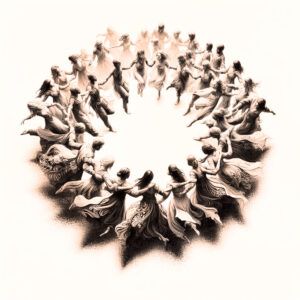
CONCEPT:
Visualization
Pronunciation:
\ˌvi-zhə-lə-ˈzā-shən\
Definition:
Visualization, also known as mental imagery or guided imagery, is a cognitive technique involving the formation of mental images to achieve specific outcomes or connect with deeper aspects of oneself. It encompasses various practices, from simple daydreaming to structured guided meditations, and can be used for personal growth, healing, performance enhancement, and manifestation.
Other Concepts
Deeper Understanding
In the intricate landscape of the human mind, visualization emerges as a profound technique that transcends simple imagination. Rooted in the cognitive abilities of forming mental images, visualization serves as a bridge between the imagined and the real, wielding the power to shape thoughts, emotions, and even physical responses. This practice, known also as mental imagery or guided imagery, has carved a significant niche in diverse domains, from sports psychology and psychotherapy to the creative arts and spiritual disciplines.
The premise of visualization is straightforward yet profound: the mind often cannot distinguish between vividly imagined scenarios and actual experiences. This blurred line between reality and imagination enables visualized scenarios to exert a tangible influence on one’s mental and physiological state. For instance, an athlete visualizing a successful performance can activate the same neural pathways involved in the actual physical activity, thereby reinforcing the desired behavior.
Historically, visualization has deep roots in ancient cultures and spiritual traditions. Practices akin to visualization were often integrated into meditation, prayer, and various healing rituals. In the modern era, the scientific community has increasingly validated these ancient practices through rigorous research. Notable studies in neuroscience and psychology have demonstrated that visualization activates the brain’s sensory networks similarly to real sensory experiences. For example, research by Kosslyn, Ganis, and Thompson (2001) elucidates the neural foundations of imagery, confirming that mental visualization engages the brain in ways that mirror actual perception.
Visualization’s efficacy extends across numerous applications. In sports psychology, athletes employ visualization to enhance performance, refine techniques, and cultivate mental resilience. Studies have shown that athletes who regularly practice mental imagery demonstrate improved performance and reduced anxiety. In the realm of psychotherapy, visualization is a potent tool for addressing trauma, phobias, and anxiety disorders. Guided imagery techniques help individuals reframe traumatic memories, envision safe spaces, and foster healing.
Moreover, visualization is instrumental in pain management and creative endeavors. Patients experiencing chronic pain can use visualization to reduce pain perception and improve quality of life. Artists and writers, too, harness the power of mental imagery to unlock creativity and overcome blocks. Visualization techniques allow them to explore new ideas, envision completed works, and navigate creative challenges.
The relevance of visualization in contemporary society cannot be overstated. As a versatile tool for personal transformation and empowerment, it enables individuals to tap into their imagination, set clear intentions, and mentally rehearse desired outcomes. Regular practice of visualization can rewire the brain, promoting a positive mindset and attracting desired results. Whether for manifesting goals, enhancing performance, or fostering inner peace, visualization offers a pathway to harnessing the mind’s incredible potential.
References
Kosslyn, Stephen M., Ganis, Giorgio, and William L. Thompson. “Neural foundations of imagery.” Nature Reviews Neuroscience, vol. 2, no. 9, 2001, pp. 635-642.
Cumming, Jennifer, and Mark R. Williams. “The role of imagery in performance.” Handbook of Sports Psychology, 2001, pp. 243-265.
Williams, Jeanine M., et al. “Imagery as a post-trauma stress intervention: A case study.” Journal of Traumatic Stress, vol. 13, no. 4, 2000, pp. 677-687.

